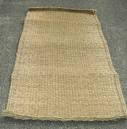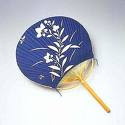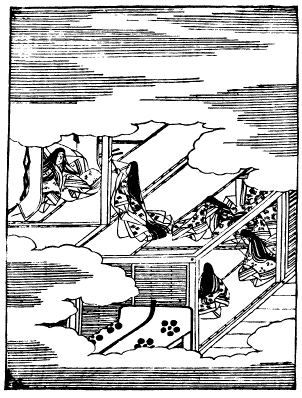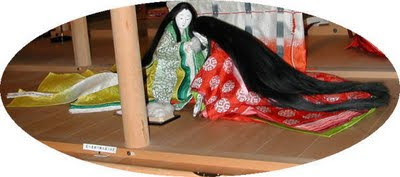::::::::::::::::::::::::::::::::::::::::::::::::::::::::::::::::::::::::::::::::::::::::::::::::::::
Autumn and entertainment
***** Location: Japan
***** Season: Autumn
***** Category: Humanity
*****************************
Explanation
Games played in autumn, entertainment in autumn, school in autumn.
Many cultural events also take place in autumn.
:::::::::::::::::::::::::::::::::::::::::::::::::::::::::::::::::::::::::::::::::::::::::::::::::::
Early autumn
kyuuka ake 休暇明 (きゅうかあけ)
end of the (summer) holidays
... kyuuka hatsu 休暇果つ(きゅうかはつ)
kyuuka shimau 休暇了う(きゅうかしまう)
kaki kyuuka hatsu 夏期休暇果つ(かききゅうかはつ) end of the summer break
nigakki 二学期(にがっき)second term in school
shuugakki 秋学期(しゅうがっき)autumn term in school
. School life in all seasons
.................................................................................
Sumo wrestling 相撲 (すもう)
:::::::::::::::::::::::::::::::::::::::::::::::::::::::::::::::::::::::::::::::::::::::::::::::::::
Mid-autumn
Tsukimi 月見 moon viewing and related kigo
:::::::::::::::::::::::::::::::::::::::::::::::::::::::::::::::::::::::::::::::::::::::::::::::::::
Late autumn

bai mawashi ばい廻し (ばいまわし / 海蠃廻し)
spinning tops with shells
beigoma べい独楽(べいごま)spinning tops
bai-uchi ばい打(ばいうち / 海打ち)、baibaigoma ばいばいごま
tsuyobai 強ばい(つよばい)"strong shell"
kachibai 勝ばい(かちばい)"winning shell"
makebai 負ばい(まけばい) "loosing shell"
BAI are special conch shells that were used as spinning tops in the Edo period. The conches were opened and the inside filled with wax or lead to make them heavy. They were especially used befor the 9th day of the 9th month of the Chrysanthemum festival. This was not only a toy for children, even grownups enjoyed a game. Later the tops were made of metal. The top of an opponent has to be kicked out of the box or round.
Now these tops are also used during the New Year holidays.
A play of words with BAI, to come back to you manifold. 福が倍にくる
バイガイ, ばい貝, 梅貝 small water snails and New Year Food
奉公にゆく誰彼やばい廻し
hookoo ni yuku darekare ya bai mawashi
someone is leaving
to become an apprentice -
spinning tops
Kubota Mantaroo 万太郎
koma 独楽 (こま) spinning top Kreisel
kigo for the New Year
........................................
gangasa 雁瘡 (がんがさ) "goose ekzema", ekzema in autumn
gansoo 雁瘡(がんそう), kangasa 雁来瘡(がんがさ)
Difficult to cure, it comes and goes as the geese come and go.
Herbstekzem
imonikai, imoni kai 芋煮会 いもにかい "boiled satoimo taro potatoes"
... imoni 芋煮(いもに)
Originally from Yamagata, with Yonezawa beef
kiku matsuri Chrysanthemum Festival
kikukaten 菊花展 (きくかてん) chrysanthemum exhibition
... kikuten 菊展(きくてん)
kiku ningyoo 菊人形 (きくにんぎょう) figures made from chrysanthemums
... kiku shi 菊師(きくし)
. . . CLICK here for Chrysanthemum Doll Photos !
momijigari 紅葉狩 もみじがり "hunting for red leaves" leaf watching
... momiji mi 紅葉見(もみじみ, kanpuu 観楓(かんぷう)
momiji fumu 紅葉踏む(もみじふむ)stepping on red leaves
momijizake 紅葉酒(もみじざけ)ricewine while watching red leaves
momijijaya momiji chaya 紅葉茶屋(もみじぢゃや)tea house for watching red leaves
momijibune 紅葉舟(もみじぶね) boat for watching red leaves
momiji taku 紅葉焚く(もみじたく)burning red leaves
momiji no ga 紅葉の賀 (もみじのが) official viewing of the red leaves, court ceremony
... aki no gyoo-u 秋の御遊(あきのぎょゆう)
. . . CLICK here for Ceremony Photos !
takegari 茸狩 たけがり "hunting for mushrooms
... kinokogari 茸狩
picking mushrooms, kinoko tori 茸採り(きのことり)
bag for mushrooms, kinoko kago 茸籠(きのこかご)
mat to spread mushrooms to dry, kinoko mushiro 茸筵(たけむしろ)
.................................................................................
observance kigo for late autumn
taiiku no hi 体育の日 (たいいくのひ) physical education day
Health and Sports Day
Second Monday of October
(it used to be the 10th of october)
kokumin taiiku taikai "National Sports Festival"
国民体育大会 (こくみんたいいくたいかい)
.... kokutai 国体(こくたい)
National Sports Tournament
National Athletic Meet
since 1946.
.......................................................................

bunka no hi 文化の日 (ぶんかのひ) culture day
Meijisetsu 明治節(めいじせつ)Meiji seasonal festival
bunkasai 文化祭(ぶんかさい)
Third of November, a national holiday
Many communities feature exhibitions and regional culture events.
© More in the WIKIPEDIA !
Lately, November 1 has been promoted to
koten no hi 古典の日 day of classical literature
.......................................................................
geijutsusai 芸術祭 (げいじゅつさい) art festival
Most events are featured in October and November, since the year 1946.
Shoosoin bakuryoo 正倉院曝涼 (しょうそういんばくりょう)
..... kaze ire, kazeire 風入れ(かぜいれ)
airing the treasures of the Shosoin treasure house in Nara
Most events center around November 3.
Not only the Shoso-In, but also many other large temples air their treasures, hang up the scrolls and invite visitors to look at them.
The Shōsōin (正倉院)
is the treasure house that belongs to Tōdai-ji, Nara. The building is in the azekura log-cabin style, with a raised floor. It lies to the northwest of the Daibutsuden (which houses the Great Buddha). The Shōsōin houses artifacts connected to Emperor Shōmu (701–756) and Empress Kōmyō (701–760), as well as arts and crafts of the Tempyō period of Japanese history.
© More in the WIKIPEDIA !
Multi-support database SHOMUS for the study of Shoshoin historical documents
正倉院文書マルチ支援データベースSHOMUS
- source : wwwap.hi.u-tokyo.ac.jp -
- source : 正倉院文書研究会 -
.................................................................................
observance kigo for all autumm
bijutsu tenrankai 美術展覧会 (びじゅつてんらんかい)
art exhibition
nikaten 二科展(にかてん)
for paintings, carvings, design and photos
inten 院展(いんてん)
Japan Fine Arts Institute Exhibition 日本美術院
nitten 日展(にってん)
short for Nihon Bijutsu Tenrankai 日本美術展覧会
bijutsu no aki 美術の秋(びじゅつのあき)
autumn of the fine arts
This is a well-loved expression encompassing all the cultural events in autumn, after the long humid summer is finally over.
:::::::::::::::::::::::::::::::::::::::::::::::::::::::::::::::::::::::::::::::::::::::::::::::::::
All autumn
AKI
shuui, shuu-i 秋意 しゅうい feeling of autumn
shuushi 秋思 (しゅうし) autumnal melancholy
shuukai 秋懐(しゅうかい), shuushuu 傷秋(しょうしゅう)
shuuyoo 秋容(しゅうよう)、aki aware 秋あわれ(あきあわれ)
aki sabishi 秋さびし(あきさびし) feeling lonely in autumn
herbstliche Melancholie
山塊にゆく雲しろむ秋思かな
sankai ni yuku kumo shiromu shuushi kana
above the isolated mountains
white clouds are moving -
autumn melancholy
Iida Dakotsu 飯田蛇笏
aki no asobi 秋の遊び(あきのあそび)joys of autumn
shuukyoo 秋興 (しゅうきょう) joy of autumn
der Reiz des Herbstes
akigawaki 秋渇き (あきがわき) dryness in autumn
aki kawaki 秋乾き(あきかわき)
autumn information, Japanese
http://weather.goo.ne.jp/information/10/01.html
........................................
aki no noasobi, no-asobi 秋の野遊び (あきののあそび)
enjoying outdoor life in autumn
aki asobi 秋遊(あきあそび)enjoying autumn outside
aki no yama asobi 秋の山遊(あきのやまあそび)enjoying the mountains in autumn
aki no pikkunikku 秋のピクニック(あきのぴくにっく)picnic in autumn
aki no ensoku 秋の遠足(あきのえんそく) excursion, outing in autumn
mushiuri, mushi-uri 虫売り/ 虫売 / むしうり vendor of insects and more MUSHI kigo
... mushiya 虫屋(むしや)
mushikago 虫籠 (むしかご) box for keeping insects
... mushigo, mushiko むしご、むしこ
........................................

undookai 運動会 (うんどうかい) athletic meeting
shuuki undookai 秋季大運動会(しゅうきだいうんどうかい)sports festival in autumn
tai-iku sai 体育祭(たいいくさい) athletic meet
Usually at schools, where parents and relatives come to enjoy one day of events and lunch together.
Sportfest
yagaku 夜学 (やがく) night school, studying at night
and related KIGO
Night work (yonabe)of a farmer Japan
*****************************
Worldwide use
Europa
Autumn Melancholy
*****************************
Things found on the way
*****************************
HAIKU
:::::::::::::::::::::::::::::::::::::::::::::::::::::::::::::::::::::::::::::::::::::::::::::::::::
*****************************
Related words
KIGO LISTS about
autumn and humanity
***** Autumn hunting and fishing
***** Autumn festivals and ceremonies
***** Autumn in the home
***** Food and Drinks in Autumn
MORE
Autumn and Humanity Kigo
. . . Autumn (aki, 秋 ) A season for haiku !
:::::::::::::::::::::::::::::::::::::::::::::::::::::::::::::::::::::::::::::::::::::::::::::::::::






































